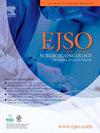Re-evaluating the necessity of removing residual calcifications detected after surgery in HR-/HER2+ breast cancer with pathologic complete response
IF 2.9
2区 医学
Q2 ONCOLOGY
引用次数: 0
Abstract
Purpose
Neoadjuvant chemotherapy(NAC) is now widely used in breast cancer to reduce tumor burden and potentially achieve pathologic complete response (pCR). However, when planning breast conserving surgery (BCS) after NAC, considerable debates remain regarding the appropriate extent of surgery. Therefore, this study was designed to comprehensively analyze residual calcifications in patients undergoing BCS following NAC, particularly regarding residual calcifications.
Materials and methods
This retrospective observational study included hormone receptor-negative (HR-) and human epidermal growth factor receptor 2-positive (HER2+) breast cancer patients treated with NAC followed by BCS from 2015 to 2020. Patients were grouped by the presence of residual calcifications. Imaging (including mammography and magnetic resonance imaging (MRI)), pathology, and clinical data were reviewed. Survival outcomes were analyzed using Kaplan-Meier curves and statistical tests appropriate to variable types.
Results
Among 150 HR-/HER2+ breast cancer patients who achieved pCR after NAC following BCS, 34 patients (22.7 %) showed residual calcifications on postoperative mammography. No statistically significant differences were observed in baseline characteristics or survival outcomes according to the presence of postoperative residual calcifications, including local recurrence free survival, disease free survival, distant metastasis free survival and overall survival. Subgroup analyses by yp T stage showed consistent results.
Conclusion
In HR-/HER2+ breast cancer patients achieving pCR after NAC, residual calcifications on postoperative imaging were not associated with worse survival outcomes. Close observation may be a reasonable option compared to additional surgery when negative margins and pCR are confirmed.
重新评价病理完全缓解的HR-/HER2+乳腺癌术后残留钙化切除的必要性
目的:辅助化疗(NAC)被广泛应用于乳腺癌,以减轻肿瘤负担,并有可能实现病理完全缓解(pCR)。然而,在NAC后计划保乳手术(BCS)时,关于手术的适当程度仍然存在相当大的争论。因此,本研究旨在全面分析NAC后BCS患者的残留钙化,特别是残留钙化。材料与方法本回顾性观察研究纳入2015 - 2020年期间激素受体阴性(HR-)和人表皮生长因子受体2阳性(HER2+)乳腺癌NAC + BCS治疗的患者。根据残余钙化的存在对患者进行分组。影像学(包括乳房x线摄影和磁共振成像(MRI)),病理和临床资料进行了回顾。生存结果采用Kaplan-Meier曲线和适合变量类型的统计检验进行分析。结果150例HR-/HER2+乳腺癌患者在BCS术后NAC后获得pCR,术后乳房x光检查显示34例(22.7%)存在残留钙化。根据术后残留钙化的存在,基线特征或生存结果(包括局部无复发生存期、无疾病生存期、无远处转移生存期和总生存期)无统计学差异。yp T分期亚组分析结果一致。结论在NAC后获得pCR的HR-/HER2+乳腺癌患者中,术后影像学上的残留钙化与较差的生存结果无关。当切缘和pCR呈阴性时,与额外的手术相比,密切观察可能是合理的选择。
本文章由计算机程序翻译,如有差异,请以英文原文为准。
求助全文
约1分钟内获得全文
求助全文
来源期刊

Ejso
医学-外科
CiteScore
6.40
自引率
2.60%
发文量
1148
审稿时长
41 days
期刊介绍:
JSO - European Journal of Surgical Oncology ("the Journal of Cancer Surgery") is the Official Journal of the European Society of Surgical Oncology and BASO ~ the Association for Cancer Surgery.
The EJSO aims to advance surgical oncology research and practice through the publication of original research articles, review articles, editorials, debates and correspondence.
 求助内容:
求助内容: 应助结果提醒方式:
应助结果提醒方式:


